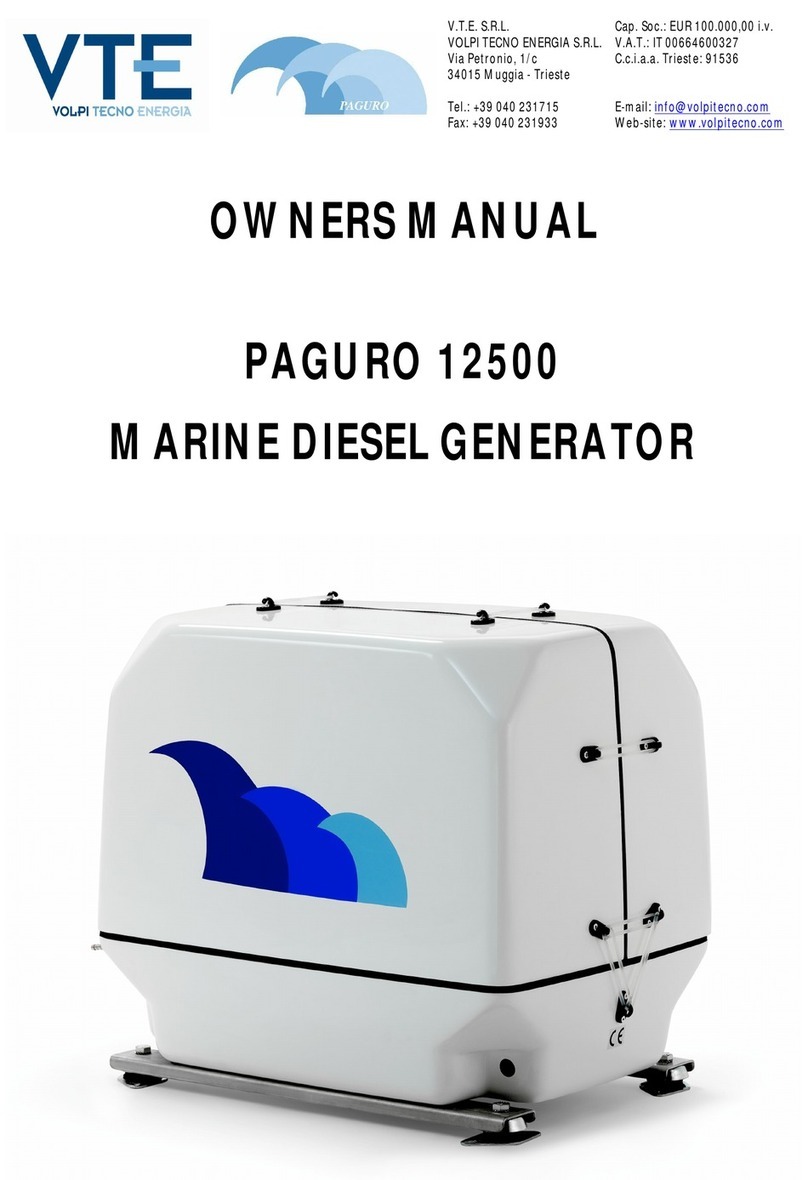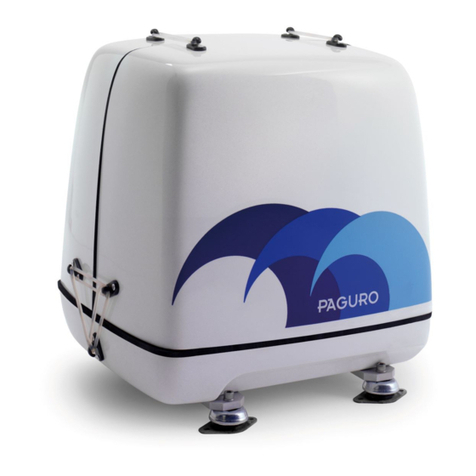9
Starting battery connection
The PAGURO is negative grounded, and can be connected to the main board batteries
12 V or to a separate small battery 12 V of about 90 Ah; in this second case its internal
charging device takes care of feeding the battery with 8 A
Note : In case of connection to the main board batteries the 8 A are available as well, but are
irrelevant for charging them: a static high power battery charger fed by the 230 V (115
V) of the set must be installed on board (on request).
Remote control (supplied)
It allows the user to START and STOP the unit, verify if there is a cooling water or oil
pressure failure, (in that case the engine shut-off automatically and the RED LED is lighted)
and the power supplied control.
For preheating keep pushed contemporaneously the START and STOP buttons for
about 10 sec.. The GREEN LED energized means that the preheating is in progress. For
starting release the 2 pushed buttons, repushing the START only.
Note 1: The load indicator is designed to avoid overloading of the unit through feeding too
many electrical loads; it begins to show the load after the first half power supplied
and has to be considered normal when the bar is GREEN. The last RED LED
lighted means an overcharge: switch-off the exceeding load to return at normal
conditions.
Note 2: Do not forget the starter knob switched ON and the engine not running due to
aborted starting attempt (YELLOW LED flashing), the STOP button should be
pushed because on the contrary the engine shut-off valve remains energized and
takes useless power from the starting battery.
Note 3: If the YELLOW LED remains flashing when the set is running normally, it means
that the internal battery charger protection has tripped, so the starting battery is no
longer connected to it. In that condition the automatic protection shut-off system is
not operative, so do not operate the set with the YELLOW light flashing.
Reset the device by pushing the button located on the side of the GREY box fitted
on the set. The set can normally operate when the YELLOW flashing LED is OFF
and the GREEN on the opposite corner is ON.






























